Peter Molyneux's Magic Carpet was a game of violent chess, and a true one-off
In this classic feature, Ed Ricketts beats the dust off Magic Carpet and takes it for a spin.
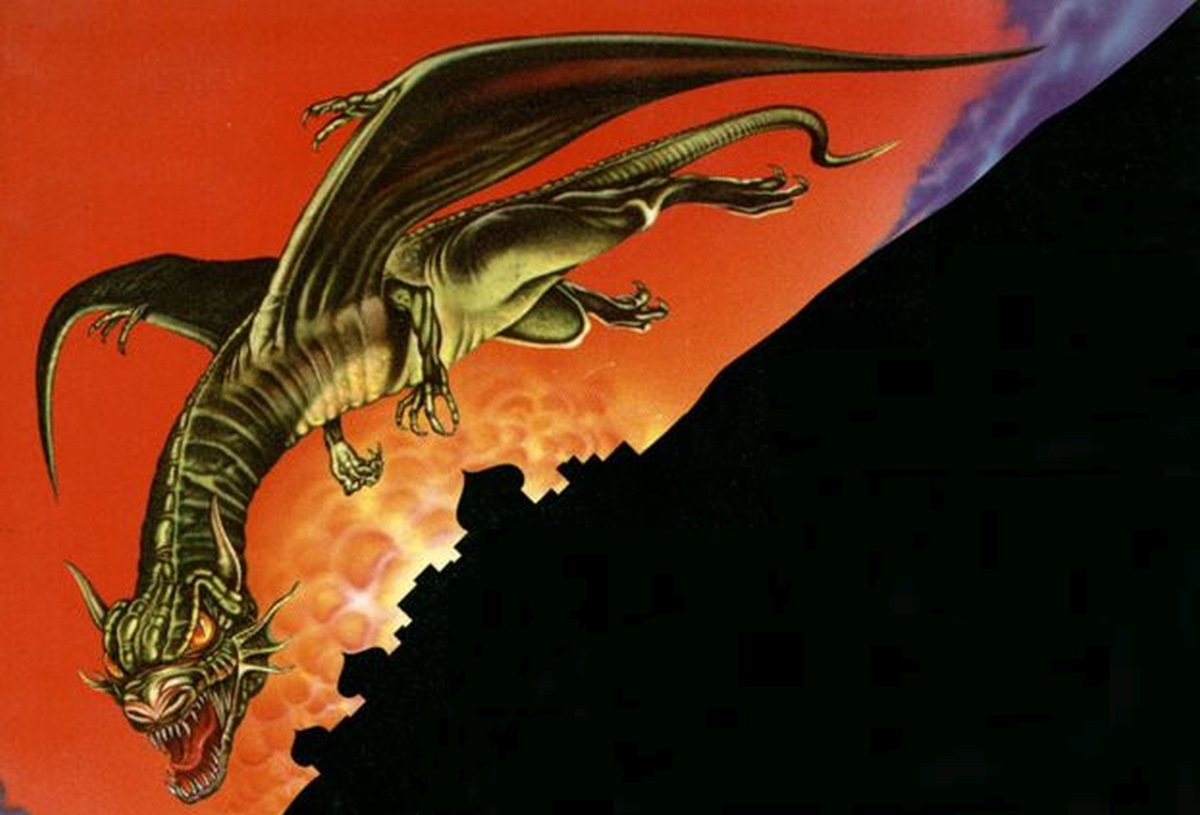
We're digging into the PC Gamer archives to publish pieces from years gone by. This article was originally published in PC Gamer issue 206, November 2009.
Combining designer Peter Molyneux's twin obsessions of the time—collecting mana and deformable landscapes—Magic Carpet is almost like a simplified, first-person 3D version of Populous without the pesky man-management. And with a great deal more fireballs.
Reinstall invites you to join us in revisiting PC gaming days gone by. This time, Ed Ricketts calls 1994's Magic Carpet "bloody hard".
Each world/level/set of islands of the 50 featured has a set level of mana, the idea being to collect enough to "restore" that world (for tedious plot reasons). This is why you happen to be floating about on your Axminster dispatching monsters with spells. At first you have only two, a pathetic fireball and a Possession spell. Do-in a monster with fireballs and it breaks up into a jumble of golden mana balls that bounce around the landscape. That's where the Possession spell comes in: shooting the golden balls turns them silver and claims them for your own.
Other magicians also flit about on carpets, have the same spells as you, and aren't averse to nicking some of your mana. So you need to protect it, and you do this by collecting another spell that builds castles out of the earth itself. Your PortaCastle comes with its own hot air balloons, which search out your claimed mana globules and take them back, safe from harm. The more mana you collect, the stronger your castle can be, and thus better protected from the other magicians who try to attack it.
MC isn't about the flying. Controlling your carpet is a simple matter of left, right, forward and back, with mouse tilt for up and down, and since you can never crash (or land, for that matter), it takes only a few minutes to get comfortable with it. Spell collection, too, isn't hard—they just lie about on the ground.
No, MC is about the strategy, and the action. The basic concept is beautifully simple, but as the game progresses, you need to use the increasingly sophisticated spells to full advantage. A well-placed volcano pinged at an enemy castle sprouts into a satisfying fire-spewing monster that nets you a great deal of mana, while Invisibility, Rebound and Mana steal could be termed utility spells.
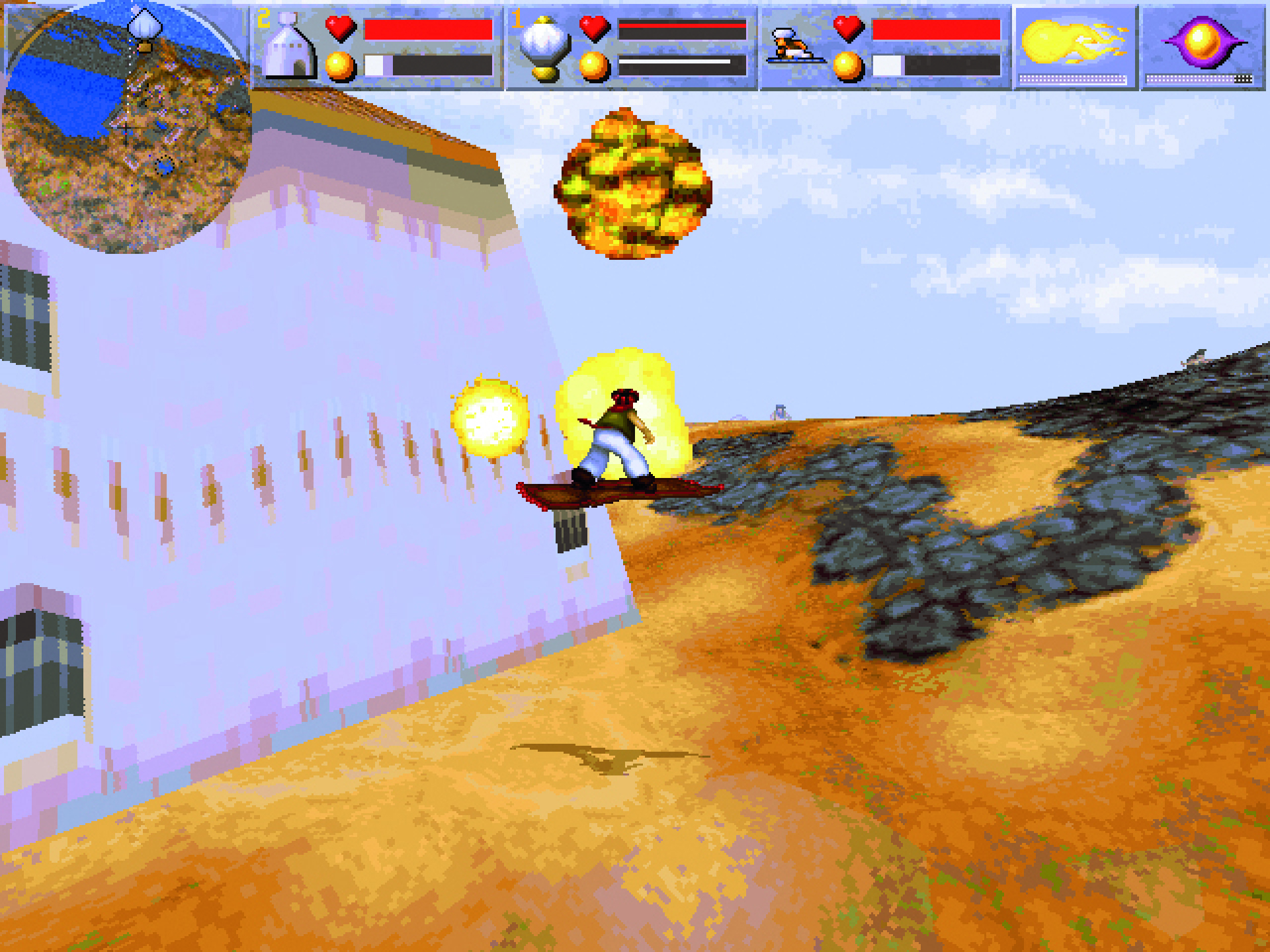
I've heard that sound on adverts, films, music tracks and TV shows, and it always reminds me of Magic Carpet.
Do you protect your castle or your balloons? Do you whizz round the native villages trying to convert them to your side, or take on an enemy wizard directly and attempt to eliminate him? Do you deal with those sodding Kraken, which pull you inexorably towards them with a kind of tractor beam, or just avoid the bloody things?
The biggest gaming news, reviews and hardware deals
Keep up to date with the most important stories and the best deals, as picked by the PC Gamer team.
It's a game of violent chess, and by modern standards, a bloody hard one. With the introduction of the aforementioned Krakens at level 7, what has previously been a bit of breeze suddenly turns serious. The combination of monster types, spells and surprisingly irksome enemy AI guarantees a hefty amount of swearing on the road to level 50.
Two things about MC will remain burned in my brain forever—or at least raise a Pavlovian response every time I hear them, as they're both sound effects. The first is the whooshing noise your carpet makes when you use the accelerate spell. It must have been a stock library effect, because I've heard it on adverts, films, music tracks, TV shows and just about everywhere since, and it always—ALWAYS—reminds me of Magic Carpet.
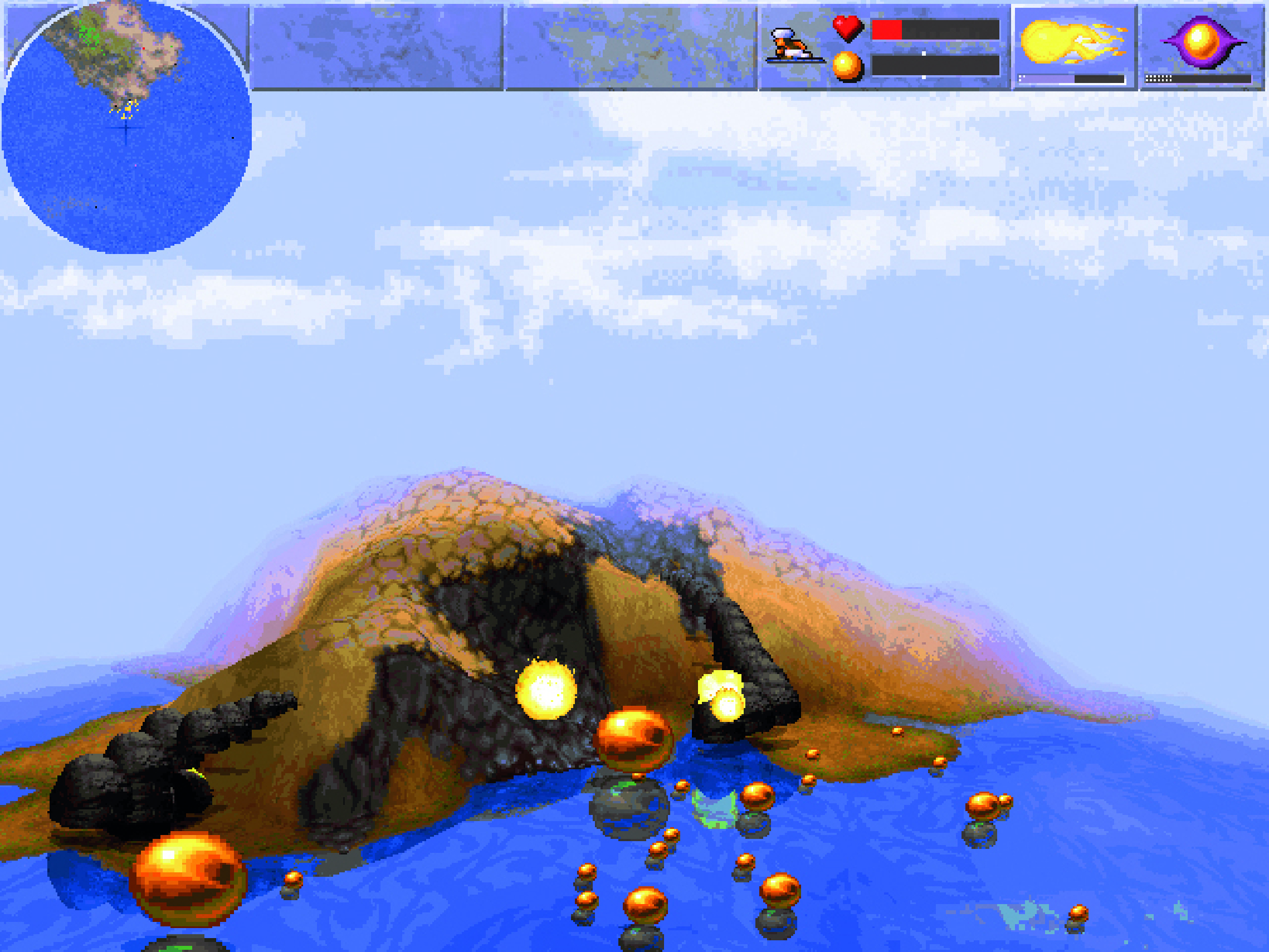
The worm that flies
The second is the noise that both the crawling worm things and the flying worm things (dragons, if we're being accurate) make when they attack you. It's a two-note howl of rage, or rather a mixture of outrage and anger, which is almost impossible to describe but which becomes the bane of your life throughout the game: EEEEEEH-UUUUUUH, EEEEEEHUUUUHHH. The second you hear this, you know one of these creatures has decided to zero-in on you—usually when you're desperately fighting an enemy wizard and really don't need any extra distractions right now, thanks.
In fact sound plays a vital part in the game's atmospherics. Most of the time a vaguely Far Eastern motif is warbling in the background, with the sound effects changing to suit the location. Drift towards a village, and a hubbub of foreign-sounding voices rises to meet you. Go out over the ocean and all you can hear is the sighing and lapping of the waves. But these are subtle effects: they aren't simply short samples that have been obviously looped, but an ambient mass of noise which drifts in and out of your consciousness.
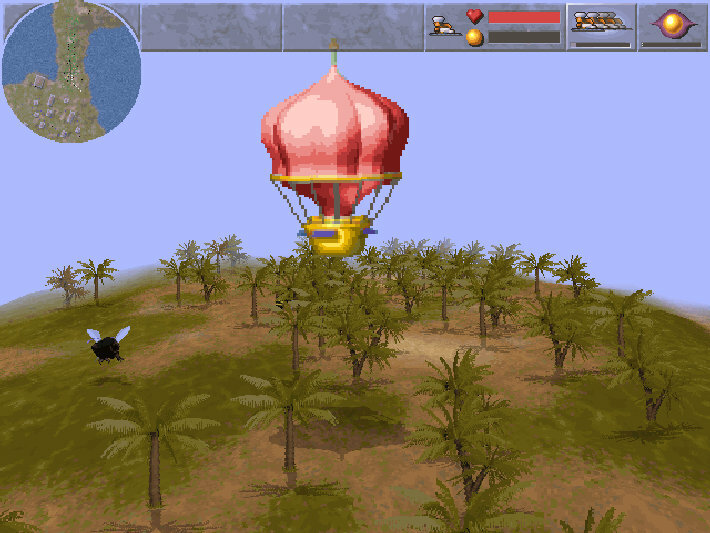
Partly because of this, Magic Carpet is a schizophrenic game. Sometimes, while you're soaring through the ether admiring the scenery with the hypnotic music gently washing over you, it's almost a thing of beauty. (Yeah, I'm man enough to say it.)
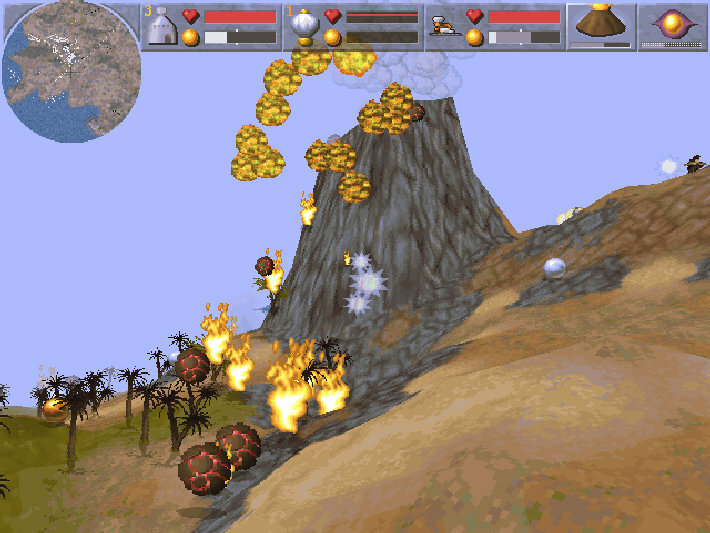
Magic Carpet was doing real-time deformable landscapes back in 1994, albeit in a very simple form. Spells such as Volcano and Crater create gigantic spewing mountains or deep crevices, both of which are great for cocking up enemy castles. In addition, one nifty if ultimately rather pointless feature enables you to load a picture and use it as the height-field for your own landscape.
But as soon as you encounter a beast of some sort, the whole mood changes. The music starts pounding, your missiles fly by the dozen accompanied by terrifying whooshes and explosions, and the air is filled with fire, golden globes of mana and general chaos. At these times it's like being in Vietnam... well, like watching a film about being in Vietnam, at least.
MC's graphics were truly revolutionary in their day: deformable landscapes in "real" 3D, water reflections and translucency, incredible speed. What stands out most these days is the use of 2D sprites rather than true 3D models, and the cripplingly short view distance, but at least you can finally run it at a fair clip (at the time, it needed an incredibly pricey Pentium to run its fancy "high resolution" mode properly).
Carpet, unlike its contemporary Doom, was something of a one-off. There still hasn't been anything to compare to it. Here indeed is a game far more worthy of a remake than yet another tedious retro arcade title: a manic blend of pure action, subtle strategy and the sort of bonkers mentality for which Bullfrog used to be justly famous. EEEEEEH-UUUUUH.

